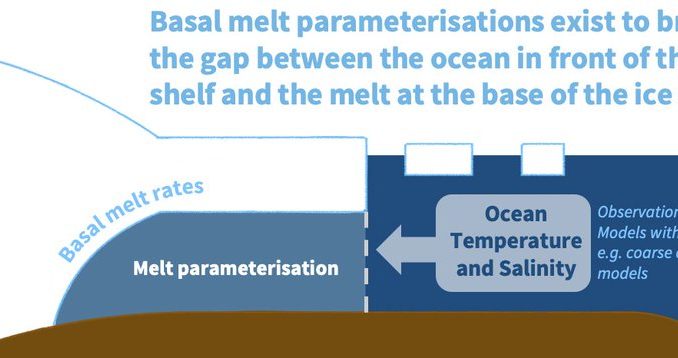
The article “An assessment of basal melt parameterisations for Antarctic ice shelves” was published in The Cryosphere.
Here are the main findings:
- WHAT? Basal melt parameterisations provide patterns of melt below the Antarctic ice shelves based on the water properties in front of the ice shelf, as given by in-situ observations or ocean models that do not resolve the cavity below the ice shelf.
- WHY? These melt patterns are essential to force the evolution of ice shelves, and consequently of the whole ice sheet, in ice-sheet models. Unfortunately, basal melt remains one of the main sources of uncertainty for projections of the Antarctic contribution to sea-level rise
- HOW? We evaluate the ability of existing parameterisations (linear, quadratic, box, plume, PICOP) to reproduce the integrated melt and melt near the grounding line simulated by an ocean model (NEMO) resolving the circulation in the cavity.

- OUR MAIN CONCLUSION We find that the quadratic parameterisation, independent of the slope of the ice-shelf base, and the plume parameterisation yield the best compromise when considering integrated melt and melt near the grounding line.

- We also looked at the influence of the average domain used for the input properties and we conducted a cross-validation to assess how the parameterisations perform on time steps and ice shelves they have not seen during tuning.

- WHAT YOU WILL ALSO FIND IN THE PAPER
- Retuned parameters
- Uncertainty estimate around the parameters
- Link to python package to play around with the parameterisations

This effort was conducted in collaboration with N. Jourdain, R. Reese, A.Jenkins and P.Mathiot, and supported by PROTECT, TiPACCs and ESM2025! Thank you also to the reviewers for the very thorough review!

Leave a Reply